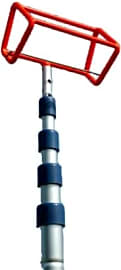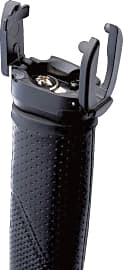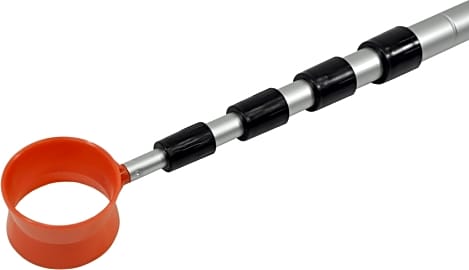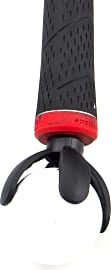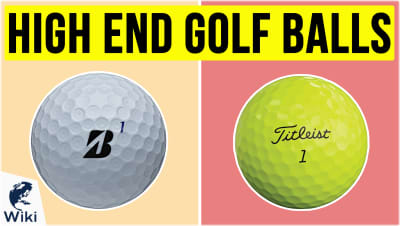The 10 Best Ball Retrievers

This wiki has been updated 38 times since it was first published in June of 2015. Good golf balls are very expensive, and the cost can really add up if yours are prone to landing in water hazards and thick rough. But with one of these handy retrievers, you can minimize your losses. They'll pick up balls easily from lakes, under bushes, and in mud, and can even save you from having to bend over at the end of each hole, which will come as a relief to back pain sufferers. When users buy our independently chosen editorial picks, we may earn commissions to help fund the Wiki.
Editor's Notes
December 15, 2020:
No matter how good of a golfer you may claim to be, everybody hits one in the dunk now and then. Rather than writing it off as lost simply because it ends up a couple of feet away from the shore, you can use one of the handy ball retrievers on this list to get it back, without ever having to get wet yourself or stick your club in the water hoping you can reach it.
When choosing the right model for your needs, you should consider a couple of factors. Obviously portability should be of some importance, though this often has to be balanced with weight, how much reach you need. For example, the JTD Enterprises Orange Trapper boasts an impressive 24-foot length at full extension, however, coming in at nearly three pounds, it is quite heavy and some may find it unwieldy. It also doesn't collapse to a very small size. Conversely, you have the I Gotcha XL, which offers a 14-foot reach at full extension, but collapses to a mere 17.5 inches and weighs just 10 ounces.
You'll also want to consider what kind of head you want. Many people find the cup-style heads, like the kind you see on the JP Lann Metal and ProActive Sports MBR012, to be one of the easiest to use, since you simply place them over the ball and push down. Once the ball is inside the cup, the little lever pops back up and traps it inside so you don't have to worry about it falling out as you pull the stick out of the water. The I Gotcha XL is another model that traps this ball in place, and it does this through the use of a spring-loaded ring. Others, though, may prefer the simplicity and reliability of a pressure cup head like that on the Orlimar Fluorescent, since there are no moving parts to potentially break. We can't determine for you which kind of head you'll like best, but we can say that all of these have been proven to work well, so it just comes down to a matter of preference.
If you are one of the few golfers that is actually as good as they claim to be, and who doesn't hit balls into the water trap, then you may be interested in just getting yourself the Nickel Putter Pick-Up, which really isn't for retrieving balls from the dunk, but rather for making it more convenient to pick them up out of the hole.
June 30, 2019:
If you're a golfer, you probably already know that collecting balls can be one of the most time-consuming and frustrating parts of the game. The retrievers in this list are designed to expedite the process so you can get back to playing faster — and without having to abandon stray balls that have landed beyond the reach of a regular club. Several of the models featured here have telescoping poles, and there are multiple head styles to choose from to suit your preference.
The DYWishkey Auto Locking has been removed due to repeated complaints about its ability to retrieve balls in brush, mud, and similarly tricky hazards. By contrast, the Mile High Life Extendable set was added due to its including two heads at a very reasonable price.
The Confusing History Of Golf
Golf-like games have been played in a number of different cultures over the years.
The true origins of golf have been debated for years, with no clear answer in site. Golf-like games have been played in a number of different cultures over the years. As far back as 100 B.C.E., there was a Roman game known as paganica, in which players would hit stuffed leather balls with bent sticks. Some historians site this as the true origin of golf, but others point to Chuiwan, a game from Song Dynasty China in which players also hit a ball with a stick. Another early game that might have been a precursor to golf is cambuca, an English stick-and-ball game from the 12th century.
Because references to golf-like games have been found in various cultures through the years, it is difficult for historians to say with confidence where it started. Until recently, it was often accepted that Scotland held the origins of what evolved into modern day golf, but new evidence now supports the theory that it was first played in the Netherlands, before migrating into Scotland. The earliest picture of people playing golf was found in a book written early in the 15th century in France. It was owned by the duchess of Burgundy and predates any reference to golf in Scotland.
Whatever the true origins of golf may be, it is known that it was extremely popular in Scotland and had to be outlawed by the Scottish parliament in 1457, as it was interfering with the military's archery training. In 1500, King James IV lifted the ban on golf because he was a fan of the sport and often liked to play it himself.
In the 17th century, golf became a popular pastime in England, and the first British Open was held in 1860. Around this same time, golf's popularity was spreading throughout the western world. North America's first permanent golf club, Canada’s Royal Montreal Club, was established in Montreal in 1873. The United States quickly followed suit with a permanent 18-hole golf course of their own, built at Wheaton, Illinois' Chicago Golf Club in 1893.
The Golf Ball Retriever
Golf ball retrievers are used to retrieve golf balls that might otherwise have been out of reach, in water hazards or deep rough, for example. They have a telescopic rod, with some extending 20 feet or more, and some kind of head on the top that is capable of picking up balls. Most pick up balls by using a simple scooping action, but some models are designed to be pressed down on top of a ball. These models often have some way to secure the ball in the head so it doesn't fall out when the retriever is lifted up. Golf ball retrievers are invaluable if one often plays on courses with deep water hazards.
Golf ball retrievers are used to retrieve golf balls that might otherwise have been out of reach, in water hazards or deep rough, for example.
The golf ball retriever was first patented in 1964 by Harvey G Wysong. Before he created the ball retriever, it was common for players to abandon balls hit into water hazards. Golf courses would either hire divers or drain the water hazards periodically to retrieve the balls, which they would later sell back to players as used balls.
In 1976, Anthony F. Piazza patented a vacuum-based golf ball retriever. It combined a tapered receptacle with a vacuum pump that could be pressurized to suck up golf balls into the receptacle. A lever was incorporated to release the vacuum pressure when it was time to drop the ball.
Piazza thought this would make retrieving balls easier, and allow for players to retrieve balls from putting green cups without having to bend over. While this style of retriever did enjoy some measure of success, they are currently difficult to find with players often choosing to use the simpler scoop style retrievers.
Picking The Right Ball Retriever
When choosing a golf ball retriever, players must often make a compromise between length and portability. On one hand, it makes sense to purchase the longest ball retriever available, but this can make them difficult to transport in a golf bag. Before purchasing a retriever, players should measure their planned storage place to ensure it will fit when fully retracted. This may be a side pocket on a golf bag or, if there is additional room, in a club slot.
If picking a stainless steel model, double check the weight.
The build material should also be taken into account when purchasing a ball retriever. Since they will regularly be exposed to water, one should look for one made out of stainless steel or aluminum, as these metals will not rust. If picking a stainless steel model, double check the weight. Overly heavy ball retrievers will be unwieldy and difficult to use when fully extended.
If you are worried about the ball falling out after being retrieved, look for a model that has some kind of locking mechanism to keep the ball securely in place. If you like to scour the water hazards for balls other players have abandoned, consider a retriever with a head designed to pick up multiple balls. Some may have room to hold two or three balls at a time. This allows you to retrieve more balls with less effort.


